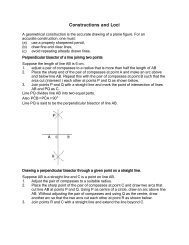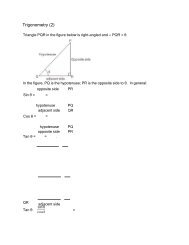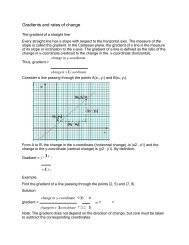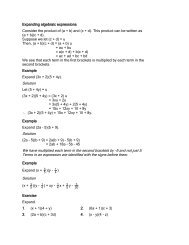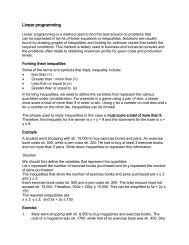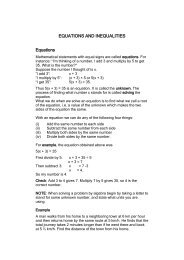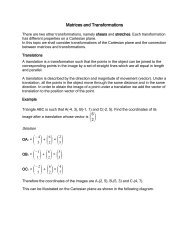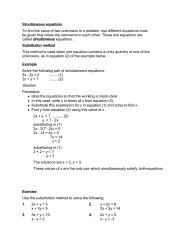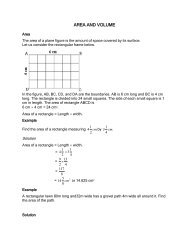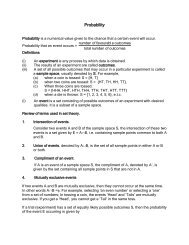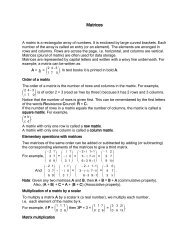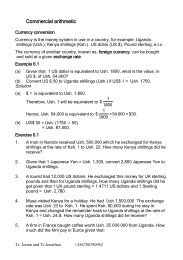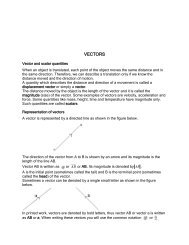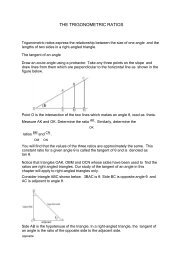J17
Create successful ePaper yourself
Turn your PDF publications into a flip-book with our unique Google optimized e-Paper software.
2. Show that (a – b)(a – b) = a 2 – 2ab + b 2<br />
Consider a square of side a units. The square can be divided into two squares: one of<br />
side (a – b) and another of side b; and two identical rectangles of side b and (a – b). That<br />
is:<br />
(a) square A has sides (a – b),<br />
(b) rectangles B and C have sides b by (a – b),<br />
(c) square D has side b.<br />
Area of the big square = a 2 ………………………(i)<br />
Area of square A = (a – b)(a – b)<br />
= (a – b) 2<br />
Area of rectangle B = (a – b)b<br />
= ab - b 2<br />
Area of rectangle C<br />
= (a – b)b<br />
= ab – b 2<br />
Area of square D = b 2<br />
Total area = (a – b) 2 + ab – b 2 + ab – b 2 + b 2<br />
= (a – b) 2 + 2ab – b 2 ……………….(ii)<br />
Equating (i) and (ii) gives:<br />
(a – b) 2 + 2ab – b 2 = a 2<br />
Therefore, (a – b) 2 = a 2 – 2ab + b 2 .<br />
Note: (a + b) 2 ≠ a 2 + b 2 and (a – b) 2 ≠ a 2 – b 2<br />
3. Show that (a + b)(a – b) = a 2 – b 2<br />
Consider a square of side a units. See figure below.<br />
The square is divided into:<br />
(a) square A of side b,<br />
(b) square D of side (a – b),<br />
(c) rectangles B and C of sides b by a – b.<br />
Area of the big square = a 2 ………………………(i)



